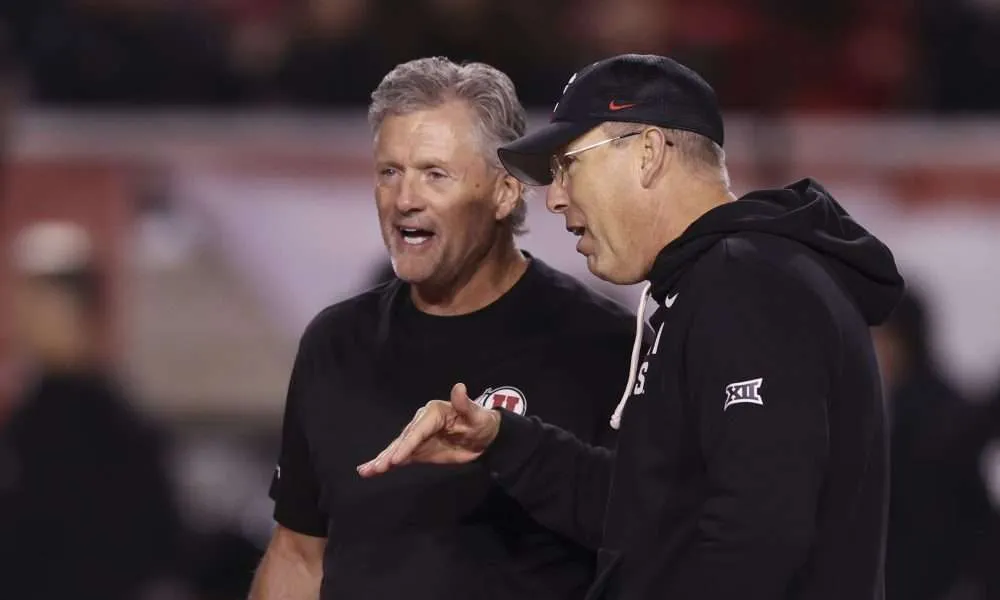NIL
Texas Gov. Greg Abbott signs NIL bill. How does it impact college athletes?
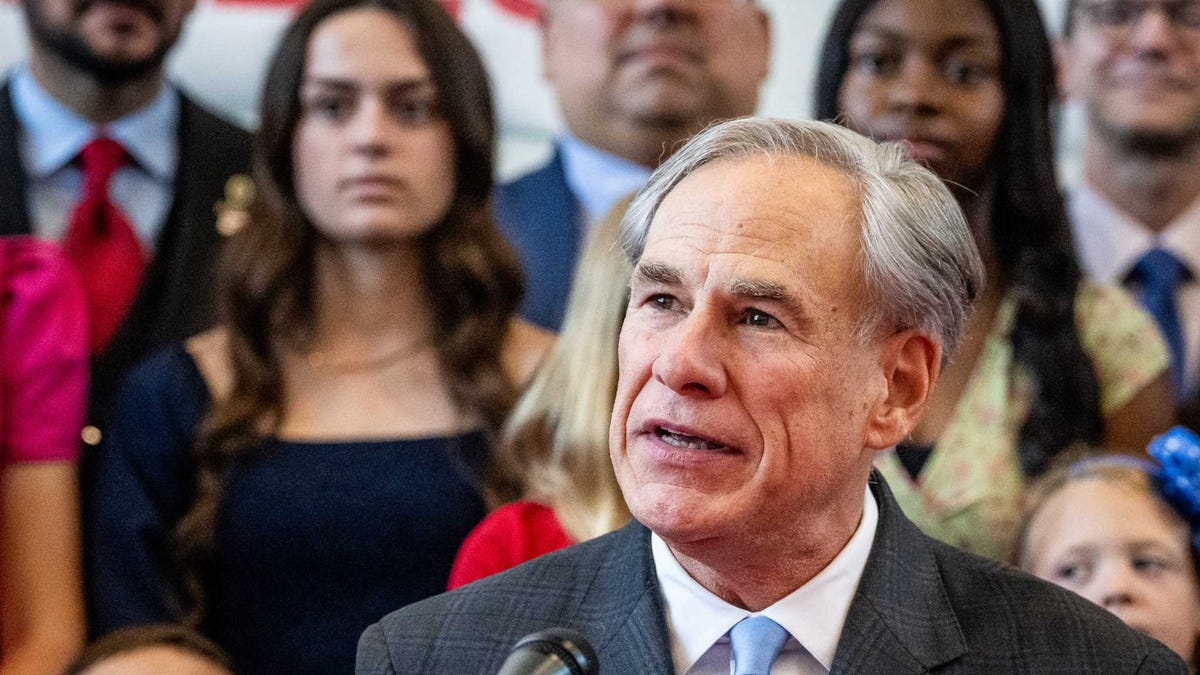
The details of the House settlement with the NCAA may not have finished, but Texas Gov. Greg Abbott signed a bill into law Thursday that will end the NCAA’s decades-old prohibition on universities paying players directly.
Under House Bill 126, colleges will be able to enter into name, image and likeness deals with athletes directly. Current state laws only allow students to have NIL agreements with third-party brands. The bill allows athletes over 17 who have enrolled in college to sign deals, but the right does not extend to high schoolers.
More: Texas football quarterback Arch Manning signs NIL deal with Red Bull
Schools will be allowed to provide a total of $20.5 million to their athletes annually. They will also be able to use the funds to recruit high school athletes, which is not allowed under the current system.
Further developments are possible depending on what happens with the $2.8 billion House v. NCAA settlement. Both sides are waiting for the final judgment on the deal, which would provide backpay to former collegiate athletes and allow revenue sharing between schools and their players. The deadline for resolution is June 27, with sharing expected to start July 1. If the House deal differs from Texas’ law, it would automatically conform to the NCAA changes without the need to pass new legislation, per KBTX.
The state law is expected to go into effect Sept. 1.
Follow the American-Statesman on Facebook and X for more. Your subscription makes work like this possible. Access all of our best content with this tremendous offer.
NIL
Marshall Faulk adds Les Miles’ son to football staff

BATON ROUGE, La. – Marshall Faulk continues to assemble a staff with deep Power Four ties, as the HBCU program at Southern University prepares to hire Ben Miles, the son of former LSU head coach Les Miles, as tight ends coach and recruiting coordinator.
The move was first reported by Matt Zenitz of CBSSports and represents another notable addition to Faulk’s growing staff in Baton Rouge. For Miles, the hire marks a return to Louisiana and a new chapter inside Black college football.
Ben Miles arrives at Southern after serving as a graduate assistant at Florida State, where he gained experience working within one of college football’s most resource-rich environments. Before joining the Seminoles, Miles worked on staff at Texas A&M, adding further exposure to high-level recruiting operations and player development.
Now, he brings that experience to an HBCU setting under one of the most recognizable figures in football.
A Baton Rouge Return
The hire carries added symbolism because of Miles’ family ties. His father, Les Miles, spent more than a decade as head coach at LSU, leading the Tigers to a national championship in 2007 and becoming one of the most recognizable figures in the program’s history.
While Ben Miles is carving out his own coaching path, his return to Baton Rouge places him back in a city deeply connected to his football roots. This time, however, the setting is Southern University, where Faulk is working to elevate the Jaguars’ profile nationally.
Recruiting Emphasis
In addition to coaching tight ends, Miles is expected to serve as Southern’s recruiting coordinator. That role aligns with Faulk’s stated emphasis on expanding Southern’s reach in modern recruiting landscapes shaped by NIL, facilities, and national visibility.
Athletics Director Roman Banks has been clear that Southern must compete differently in today’s college football environment. Adding staff members with Power Five experience supports that goal and enhances Southern’s credibility with prospects and families.
Miles’ background at Florida State and Texas A&M provides insight into recruiting operations at the highest level. That knowledge could prove valuable as Southern seeks to attract and retain talent in an increasingly competitive space.
Staff For Marshall Faulk Takes Shape
Since being introduced as head coach, Marshall Faulk has leaned heavily on relationships, trust, and experience while building his staff. The additions of Todd Lyght and now Ben Miles reflect a blend of NFL pedigree, Power Five exposure, and long-term developmental focus.
Southern is not simply filling roles. The Jaguars are assembling a staff designed to teach, recruit, and compete with purpose.
As Faulk’s first season approaches, each hire adds another layer to what is becoming one of the most closely watched coaching transitions in the HBCU football landscape.
The post Marshall Faulk adds Les Miles’ son to football staff appeared first on HBCU Gameday.
HBCU Gameday
This story was originally published December 18, 2025 at 2:25 PM.
NIL
Texas’ Michael Taaffe reveals ‘different’ approach to navigating NIL

During his time at Texas, Michael Taaffe built an impressive social media following with more than 80,000 followers across Instagram and X. That platform is important in the NIL era – but Taaffe took a “different” approach.
Taaffe didn’t ink many high-profile deals during his time at Texas. He was part of Sonic’s activation along with some Longhorns teammates and Texas A&M players, and he joined Seat Geek’s initiative ahead of last year’s College Football Playoff.
SUBSCRIBE to the On3 NIL and Sports Business Newsletter
Instead, Taaffe’s focus remained on the big picture, which included his efforts with Texas Against Fentanyl. That’s why he wasn’t necessarily active in the NIL space with deals.
“I think NIL, for me, has been a little bit different because there’s opportunities that I have taken to get a little cash in the wallet, in the pocket,” Taaffe told On3 via Zoom on behalf of Allstate. “But I think, would you much rather have this little success? This little financial success that at the end of the day, when you have to go buy a house, when you have to get a car, when you have to pay rent, this little success isn’t going to matter in the long-term? Or, would you rather have success and significance to the University of Texas that will last 100 years? I chose that route.”
Taaffe focused on giving back throughout his time at Texas. His efforts in substance abuse prevention helped him win the Wuerrfel Trophy, the premier award for community service. He helped raise nearly $60,000 for Texas Against Fentanyl through a fundraiser, which he said helped cover the organization’s yearly budget.
Taaffe’s efforts went beyond substance abuse awareness, though. He also helped raise more than $100,000 for the Texas Flood Relief Foundation after the flooding at Camp Mystic earlier this year and has visited the Dell Children’s Hospital to distribute food.
But while other athletes star in ads or promote different products through NIL, Michael Taaffe wanted the ability to have a platform to make a difference. He understands why his peers have a different approach, though. It just didn’t fit with his goals.
“I don’t fault anybody for the routes they take,” Taaffe said. “But I just knew that I believe being significant is way more important than being successful.”
NIL
Michael Wilbon claims Kalen DeBoer will leave Alabama for Michigan with loss in College Football Playoff opener

The College Football Playoff gets underway Friday night as Alabama heads to Norman to take on Oklahoma. But to ESPN’s Michael Wilbon, there’s even more at stake for Crimson Tide coach Kalen DeBoer.
DeBoer’s name has been the subject of rumors throughout the offseason in the coaching carousel. Most recently, he received questions about the opening at Michigan following Sherrone Moore’s firing for cause, though he made it clear he intends to be at Alabama in 2026.
However, Wilbon didn’t sound as convinced. He predicted Alabama would not only lose to Oklahoma on Friday night, but DeBoer would also be on a flight to Ann Arbor to take the Michigan job afterward.
“Let me tell you about … two schools that could be in the coaching carousel after [Friday night],” Wilbon said Thursday on Pardon The Interruption. “Because when Alabama loses to Oklahoma – let me say it again, when Alabama loses to Oklahoma – the coach of Alabama, half the people in the state will want to run him out. And he’ll be on the carousel – oh, wait, that’s a G5 being flown to Ann Arbor, Mich., where he has said, ‘Oh, no. I ain’t got no interest in that.’ He’ll have interest [Friday night].
“And then, Alabama will be in the coaching carousel because they’ll be looking for a coach. … The Alabama coach is going to have a job-on-the-line situation in 24 hours and then, headed to Michigan once he loses. And then, Alabama’s looking. Then, what are you going to say?”
During a press conference this week ahead of the College Football Playoff opener, Kalen DeBoer was directly asked if he intended to be Alabama’s head coach next season. He responded, “Yes.”
Earlier in that press conference, DeBoer received a question about the rumors surrounding him. He again spoke highly of his tenure at Alabama so far and made it clear he’s happy in Tuscaloosa.
“A lot of the same things I said before, a couple weeks ago, when asked really the same question, just feel completely supported,” DeBoer said. “My family loves living here. Just all the things that we continue to build on, love the progress. Haven’t talked with anyone, no plans of talking with anyone. So just, I think that’s a lot of what I said a couple weeks ago, and continues to be the same thing.
“Feel strong about it. And our guys, if there’s been any distraction, I haven’t seen it, haven’t felt it. I’m really proud of the way they’ve handled whatever noise is out there. And again, we probably all season long, have dealt with enough noise to where it wouldn’t surprise me on how they handle this.”
NIL
Matt Rhule Addresses Dylan Raiola, NIL Investment and the Portal Era

Matt Rhule sounded comfortable, confident, and in control during his interview Wednesday night with the Husker Radio Network ahead of Nebraska’s bowl matchup against Utah.
At times relaxed, “Just Matt,” as he put it when the hat turned backward, Rhule covered a wide range of topics that collectively outlined where the program stands and where it’s headed over the coming months.
From his former starting quarterback and the transfer portal to staff changes and Nebraska’s evolving financial status, Rhule touched on nearly everything Husker fans want to know during an offseason filled with uncertainty.
With that in mind, here’s what Rhule said about the state of his program heading into his fourth offseason in Lincoln.
Sources: Nebraska quarterback Dylan Raiola intends to enter the NCAA transfer portal. He’s a true sophomore who has two years of eligibility remaining. He threw for 18 touchdowns, 2000 yards and completed 72.4% of his passes this year. pic.twitter.com/Frt7QgFN57
— Pete Thamel (@PeteThamel) December 15, 2025
Dylan Raiola, the portal era, and Nebraska’s quarterback outlook
Making his first public comments on the subject since the news broke on Dec. 15, Rhule didn’t shy away from addressing Dylan Raiola’s decision to enter the transfer portal. Instead, the Huskers’ head coach framed it as a reality of modern college football.
“I think all of our fans, all of our staff, we all just have to embrace it,” Rhule said. “We’re in the portal era. The portal will giveth and the portal will taketh away. It’s just the new normal.”
Raiola’s impact on the program wasn’t dismissed. As the first five-star quarterback to commit to Nebraska, Rhule said, he helped shift national perception around the program.

“He was the first five-star to come here and signal to everybody, ‘Hey, it’s cool to come to Nebraska,’” Rhule said. “And I think you’ve seen some players follow suit.”
Since then, December of 2023 to be exact, the Huskers have been able to sign two other five-star recruits. Williams Nwaneri (No. 6 overall recruit) was ranked one spot higher in the 2024 class than Raiola and eventually joined the Huskers’ roster via the transfer portal prior to the 2025 season. And on Dec. 5 of this year, Danny Odem (No. 31 overall recruit) signed his letter of intent to join the Huskers’ roster in 2026.
While acknowledging Raiola’s desire for a fresh start, Rhule also emphasized Nebraska’s preparedness moving forward.
“If he needs a fresh start, I’m going to pray that he finds the right place and has success,” Rhule said. “With that being said, there’s a lot of great quarterbacks out there and a lot of guys want to play at Nebraska.”

Following his comments on Raiola, Rhule made it a point to publicly reinforce his belief in the quarterback currently on Nebraska’s roster, TJ Lateef.
“We have a great quarterback in Lateef,” Rhule said. “I don’t think there’s a guy on our roster that doesn’t believe TJ is a starting quarterback.”
While praising Lateef’s mindset and approach, the head coach noted that his first-year player has embraced responsibility rather than shying away.
“TJ has no confidence issues and he doesn’t make excuses,” Rhule said. “He doesn’t blame other people. He knows he can be our starting quarterback, and he’s going to do a great job against Utah. He’s going to win a lot of games for us at the University of Nebraska.”
Doubling down.
Nebraska will face Utah in the 2025 @LasVegasBowl.
🎲ℹ️ https://t.co/6KjRTnx3ms pic.twitter.com/ifFIDYHnec
— Nebraska Football (@HuskerFootball) December 7, 2025
While a vote of confidence may be exactly what his new signal-caller needs, Rhule also reiterated the importance of depth at the position, particularly in today’s college football landscape.
“We’ll have great quarterbacks in that room,” Rhule said. “You need more than one. People want to play for Dana Holgorsen. They want to play for Glenn Thomas.”
If one thing over the offseason is true, Rhule isn’t interested in keeping his program at the status quo. He wants the players on his roster to have the ability to develop into the players they want to be, and he’s putting new coaches in place to do just that.

Single portal window, financial outlook, and Nebraska’s changing staff
While the transfer portal remains a major tool, Rhule emphasized that Nebraska’s approach, now and always, will be to develop players first. And amid changes to the portal window, it has allowed the coaching staff to spend more time focused on player development.
“Historically, in December you’re on the road recruiting,” Rhule said. “But now, we’re all able to be out there and we are focused. We’re focused on getting our team better.”
With a roster like Nebraska’s, currently featuring 91 scholarship players listed as underclassmen, development is exactly what his program needs. And now, with a new-and-improved recruiting schedule in his advantage, the Huskers’ head coach is using his time to help his younger guys take the next step.

Rhule also noted that much of Nebraska’s roster is made up of players the current staff recruited but have yet to be given their opportunity.
“I believe they’re good players,” Rhule said. “We were a part of recruiting them. They’re our guys. Before we start looking to the portal, we want to make sure we get a real evaluation of our guys and what role they can fill.”
As encouraging as that should be, and is, the head coach made it clear his comment doesn’t mean Nebraska will shy away from portal additions come January.
“We’re going to do both,” Rhule said. “We want guys to burst onto the scene the way Emmett Johnson did. But we also want to go out and get players in the portal that can help us.”
He finished out the topic by saying, “Our job is to put together the most competitive team full of great players. Guys can’t be afraid of that.”

Perhaps the most interesting portion of Rhule’s interview centered on Nebraska’s financial standing entering the upcoming offseason. To this point in time, the Husker fan base has been told their favorite program is competitive, but after speaking with Rhule, the Huskers Radio Network was able to discover that 2026 will be vastly improved.
“This will be the first year that we’re at the higher end of the market,” Rhule said. “We might not be where Texas and Texas A&M are, but we’re right there. We’re right below that.”
For context, both of the aforementioned schools have been able to compete at the highest level of college football in recent years. Both programs have or will compete in the College Football Playoff, and don’t appear to be handicapped financially in any way.

Rhule credited athletic director Troy Dannen for positioning Nebraska to compete financially, both in retaining talent and adding impact players.
“For every player that leaves and goes and has four or five sacks, we don’t want to lose those guys,” Rhule said. “We want to keep the players that can help us.”
But from Rhule’s perspective, it isn’t just Dannen that helps the Huskers compete for the nation’s top talent. He also highlighted Nebraska’s fan base as a unique advantage in the NIL space, particularly through local business partnerships and “true NIL” opportunities beyond revenue sharing.
“It’s a differentiator for us,” Rhule said. “It’ll help us in the portal. But make no mistake — having money does not mean you’re going to have a good team. But if you don’t have money, it’s pretty hard to have a good team.”
The head coach finished his comments bluntly, without offering an excuse. “There is no in between,” Rhule added. “Either we do this to be successful, or we don’t, and we become a Group of Four team.”

The other aspect of having a competitive team is having competent coaches on the staff. Following changes made after the regular season, Rhule described the transition as an opportunity for fresh evaluation across his roster.
“They’re getting a fresh look at these guys,” Rhule said, plainly. After additions were made, the head coach made it known how big an opportunity securing a sixth win in 2025 gave the Huskers to further assess needs moving forward.
With the dismissal of former defensive line coach Terry Bradden, Rhule himself has taken over defensive line duties, embracing a hands-on role during bowl prep. Nebraska defensive lineman Riley Van Poppel was also rewarded with a Blackshirt ahead of the matchup with Utah after playing in every contest this season and earning two starts.

Rhule praised new defensive coordinator Rob Aurich for his ability to lead and develop players. He even suggested the new leader of the defense has taught him some new tricks.
“It doesn’t matter the scheme,” Rhule said. “It matters that your players know the scheme and can adapt.” With recent comments from interim defensive coordinator Phil Snow suggesting the Huskers struggled knowing responsibilities in 2025, Rhule’s comments offered confidence that under Aurich, that won’t be the case.
On new offensive line coach Geep Wade, Rhule emphasized physicality and confidence as key traits he wants to see moving forward. Something the Huskers’ head coach saw from Wade’s former units on tape.
“I want them playing with a level of violence and physicality that only comes from confidence,” Rhule said. With just two of Nebraska’s starting offensive linemen set to return, Wade will have the ability, either by financially obtaining the players needed or by developing them, to kickstart the mindset change.

Quick Hits
- On Nebraska continuing to work on its current roster ahead of the January transfer portal window, Rhule said the focus right now is on retention. “At this time right now, we’re doing a lot of work with our current roster in terms of re-signing guys to contracts and signing guys up for next year.”
- On young running backs Mekhi Nelson and Isaiah Mozee potentially stepping into larger roles, Rhule said the belief inside the program is already there. “If you asked every guy on our team what they think about Mekhi Nelson and Isaiah Mozee, I think they’d say it’s kind of like a ticking time bomb. They’ve been waiting for their opportunity to explode.”
- On what makes new defensive coordinator Rob Aurich a good man for the job at Nebraska, Rhule said, he’s got characteristics similar to Tony White. “Because he’s had two huge defensive turnarounds as a first-year coordinator. That to me is the ultimate- It’s what Tony White did when he got here.”
- On what being more competitive financially will do for his program, Rhule said they will not be handicapped. “We spent two and a half years trying to reestablish the foundation of the program. Make no mistake, it was rocky. And I can turn my attention now more to football.”
More From Nebraska On SI
Stay up to date on all things Huskers by bookmarking Nebraska Cornhuskers On SI, subscribing to HuskerMax on YouTube, and visiting HuskerMax.com daily.
NIL
Memphis HC Penny Hardaway: I ‘Fined’ Aaron Bradshaw NIL Money to Motivate Him
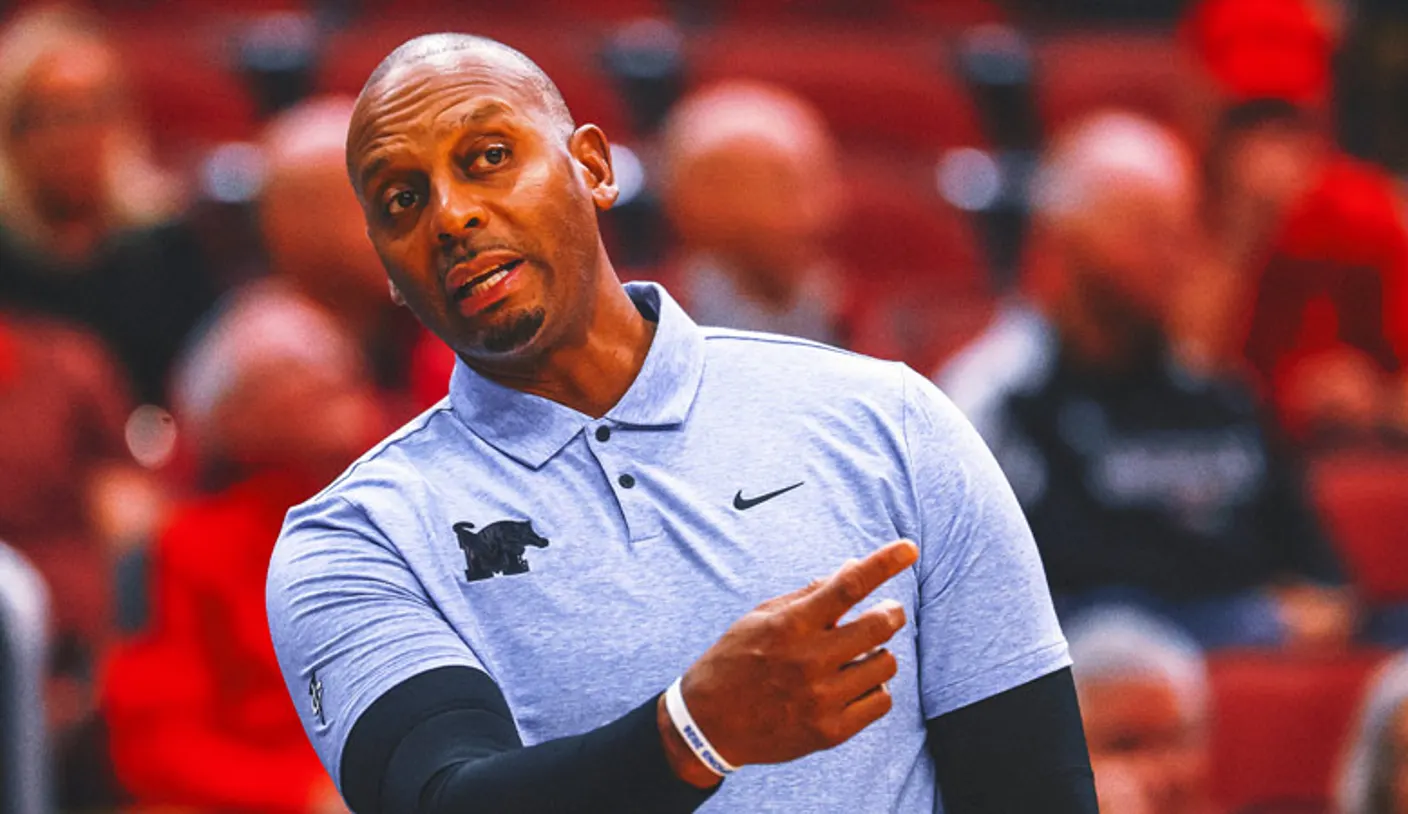
How do you get somebody’s attention? Well, one way to get a college basketball player’s attention is by taking away their NIL money, like Memphis Tigers head coach Penny Hardaway did with junior forward Aaron Bradshaw.
“Aaron Bradshaw has played for some great coaching staffs, but they haven’t figured out how to motivate him, so Penny Hardaway found a way to motivate Aaron Bradshaw. He started taking his NIL money away,” it was revealed on the broadcast of the Tigers’ Wednesday night loss to the Vanderbilt Commodores.
“He said, ‘I fined him for showing up late. I fined him for violating our dress code. Three grand here, three grand there. Guess who started to show up early? Guess who started to put the effort in?’ … He [Hardaway] takes that fine money and puts it back in the bucket and has some guys further down the roster reaping the cash benefit of those fines.”
Message received.
Memphis is the third stop for Bradshaw in his collegiate career, with the former five-star recruit spending his freshman season at Kentucky (2023-24) and sophomore season at Ohio State (2024-25). Through nine games this season, six of which he has started, Bradshaw is averaging a career-high 7.1 points and 2.9 rebounds in 15.4 minutes per game, while shooting 50.0% from the field.
Hardaway, who starred at Memphis for two seasons as a player (1991-92, 1992-93), is in his eighth season as the Tigers’ head coach, with Memphis a combined 166-74 under him since the 2018-19 season, highlighted by two American Tournament titles and three NCAA Tournament appearances. However, Memphis is off to a 4-6 start this season, with three of its six losses being against ranked opponents in Purdue, Louisville and Vanderbilt.
Maybe if Hardaway takes away the entire team’s NIL dough, Memphis will run the table in conference play?
MORE COLLEGE HOOPS: Last Night in College Basketball: No. 13 Vanderbilt Passed OT Test vs. Memphis
Want great stories delivered right to your inbox? Create or log in to your FOX Sports account, and follow leagues, teams and players to receive a personalized newsletter daily!
NIL
Joel Klatt can’t stand NIL re-signing announcements
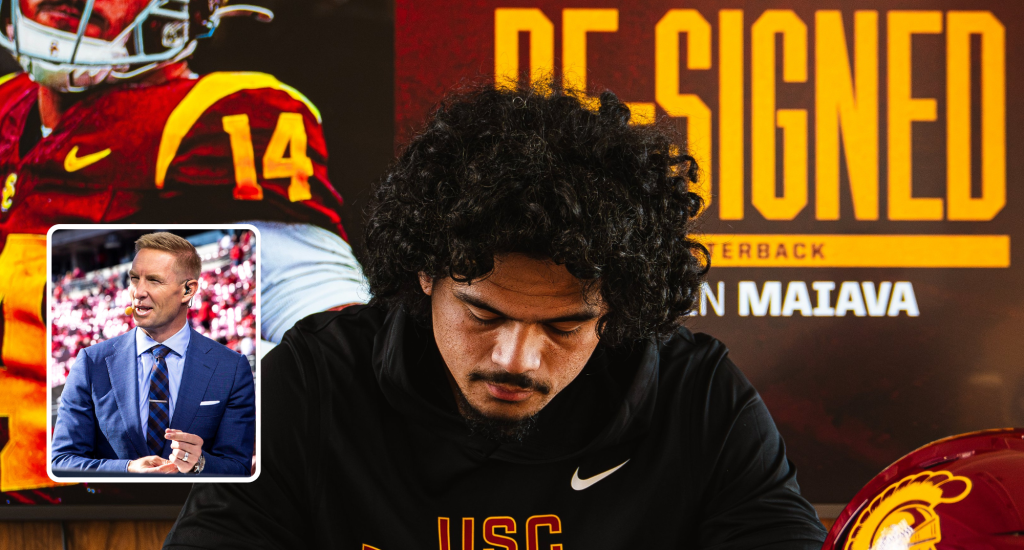
Joel Klatt has had it with college football’s latest social media phenomenon.
In the wake of USC quarterback Jayden Maiava’s re-signing announcement, racking up nearly five million impressions on X, Fox’s lead college football analyst didn’t hold back his frustration with what’s become a growing trend across the sport.
Jayden Maiava has re-signed with the USC Trojans. pic.twitter.com/jLI0S6hPKh
— USC Football ✌️ (@uscfb) December 16, 2025
“I can’t with the re-signing of players, I’m sorry,” Klatt said.
“I can’t with the re-signing of players, I’m sorry.”@joelklatt shares his thoughts on the issues in college football, specifically surrounding “re-signing” and player representation. Do you agree? pic.twitter.com/lCFw3FfMUW
— FOX College Football (@CFBONFOX) December 17, 2025
USC’s social media account posted Maiava’s re-signing announcement on Dec. 16, followed by a flurry of similar posts for other Trojans players. Tobias Raymond, Chasen Johnson, Romero Ison, Jahkeem Stewart, and Kendarius Reddick all got the graphic treatment announcing they were staying with the program.
Tobias Raymond has re-signed with the USC Trojans. pic.twitter.com/OYAWhIup4Y
— USC Football ✌️ (@uscfb) December 17, 2025
Chasen Johnson has re-signed with the USC Trojans. pic.twitter.com/J56Jb7ZpD9
— USC Football ✌️ (@uscfb) December 17, 2025
Romero Ison has re-signed with the USC Trojans. pic.twitter.com/pA11LlvOAx
— USC Football ✌️ (@uscfb) December 17, 2025
Jahkeem Stewart has re-signed with the USC Trojans. pic.twitter.com/nr76iwVxRj
— USC Football ✌️ (@uscfb) December 17, 2025
Kendarius Reddick has re-signed with the USC Trojans. pic.twitter.com/dc88qAVLsu
— USC Football ✌️ (@uscfb) December 17, 2025
But for Klatt, these announcements feel fundamentally different from how free agency works in professional sports.
“I started seeing some of these announcements on social media, guys would text me these announcements, and this is going to sound like I’m picking on guys,” Klatt said. “This is not their fault, but like Malik Washington, Waymond Jordan, LaNorris Sellers, there’s all these stories about like, ‘Oh, they’re re-signing. They’re working on a deal to stay.’ And I’m like, I don’t want to hear that. I don’t want to see it. You mean, wait, was he about to leave?”
Joel Klatt isn’t blaming the players. But in the NFL, fans know when a guy is a free agent and can walk. So when he re-signs, it makes sense. In college, a player is already on the team, already getting NIL money, and then announces he’s re-signing? It just makes fans wonder what they missed.
“This is so different than in the National Football League when your favorite team has a player that you love that you know is a free agent, and then they re-sign him, and you’re like, ‘Nice!’” Klatt contiuned. “That feels a lot different than like I’m a fan of a college team and I just think that this player who’s committed to this school, who’s at this school, who has more eligibility left, and is making a large sum of money through NIL, and then all of a sudden he’s like, ‘I’m re-signing.’ It’s like, ‘I didn’t know you thought about leaving.’”
But Klatt’s real issue isn’t the social media pageantry. It’s what’s happening behind the scenes.
“I don’t think that this is good for players, either, I really don’t. And let me tell you why: these contracts can be binding, and they can be loose, but it all depends on how they’re negotiated because there’s not a formality to the process,” Klatt explained. “So, the schools can kind of do whatever they want to do. They’re making their own rules, and then there’s some representation out there that is representing college players, and they want to play by their own rules.”
The lack of regulation in college athlete representation is a real problem. Unlike NFL players who are represented by NFLPA-certified agents, college athletes can hire essentially anyone to negotiate their NIL deals. There’s no registration requirement, no oversight, no baseline standard.
And according to Klatt, some of these representatives have no idea what they’re doing.
“And some of the representatives, by the way, are not very sophisticated. Guess why? Because they’re not representing a client that’s part of an association or a union, so they don’t have to register,” he added. “So the players can hire whomever. It can be like Uncle Eddie. We don’t know who these representatives are. That’s not to say that all of them are bad, but there are some that certainly don’t know what they’re doing. So, there are players because of that, that are signing contracts that they don’t even really know what they’re signing.”
Despite all his complaints about NIL representation and re-signing announcements, Joel Klatt still believes in college football.
“I remain very optimistic about our sport,” Klatt said. “I really do. I think college football’s in a great spot. I think that it can get better, but that doesn’t mean I’m blind to the problems.”
But his optimism won’t stop the re-signing trend. Schools will keep celebrating players who decide to stay, and fans will keep wondering if they were ever really thinking about leaving. It’s just part of college football now.
-

 Motorsports1 week ago
Motorsports1 week agoSoundGear Named Entitlement Sponsor of Spears CARS Tour Southwest Opener
-
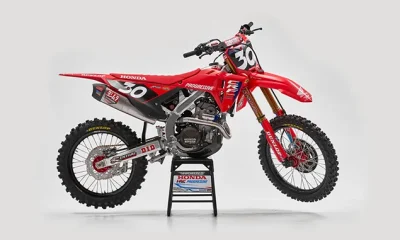
 Motorsports3 weeks ago
Motorsports3 weeks agoJo Shimoda Undergoes Back Surgery
-
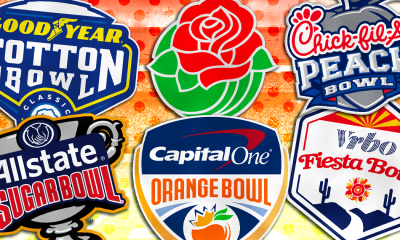
 NIL3 weeks ago
NIL3 weeks agoBowl Projections: ESPN predicts 12-team College Football Playoff bracket, full bowl slate after Week 14
-

 Rec Sports3 weeks ago
Rec Sports3 weeks agoRobert “Bobby” Lewis Hardin, 56
-
Sports3 weeks ago
Wisconsin volleyball sweeps Minnesota with ease in ranked rivalry win
-

 Motorsports1 week ago
Motorsports1 week agoDonny Schatz finds new home for 2026, inks full-time deal with CJB Motorsports – InForum
-

 Motorsports3 weeks ago
Motorsports3 weeks agoIncreased Purses, 19 Different Tracks Highlight 2026 Great Lakes Super Sprints Schedule – Speedway Digest
-
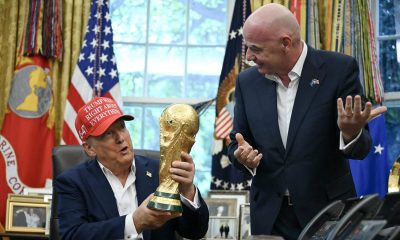
 Rec Sports2 weeks ago
Rec Sports2 weeks agoHow Donald Trump became FIFA’s ‘soccer president’ long before World Cup draw
-

 Motorsports3 weeks ago
Motorsports3 weeks agoMichael Jordan’s fight against NASCAR heads to court, could shake up motorsports
-
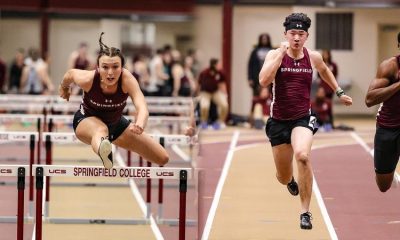
 Sports2 weeks ago
Sports2 weeks agoMen’s and Women’s Track and Field Release 2026 Indoor Schedule with Opener Slated for December 6 at Home































